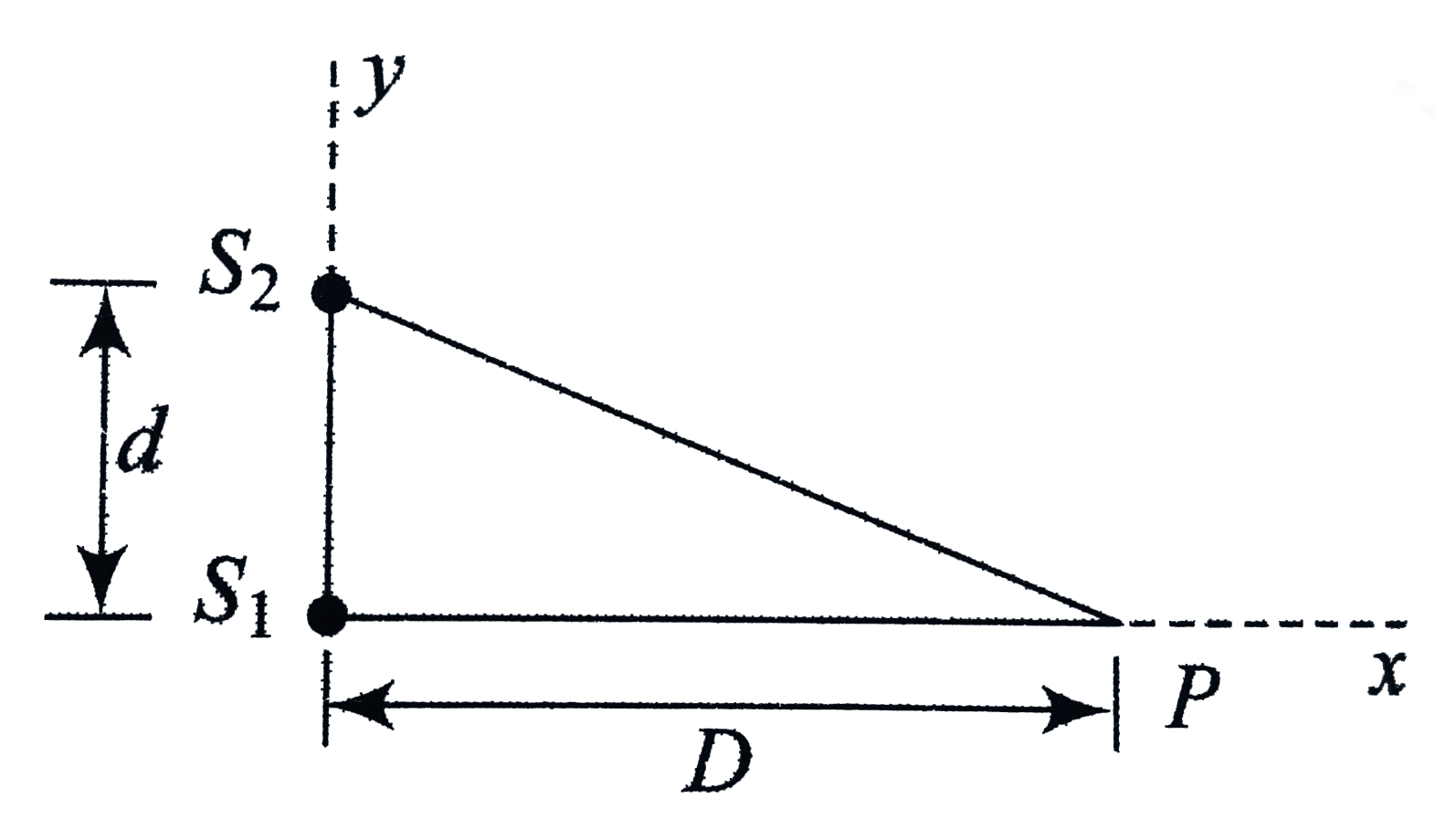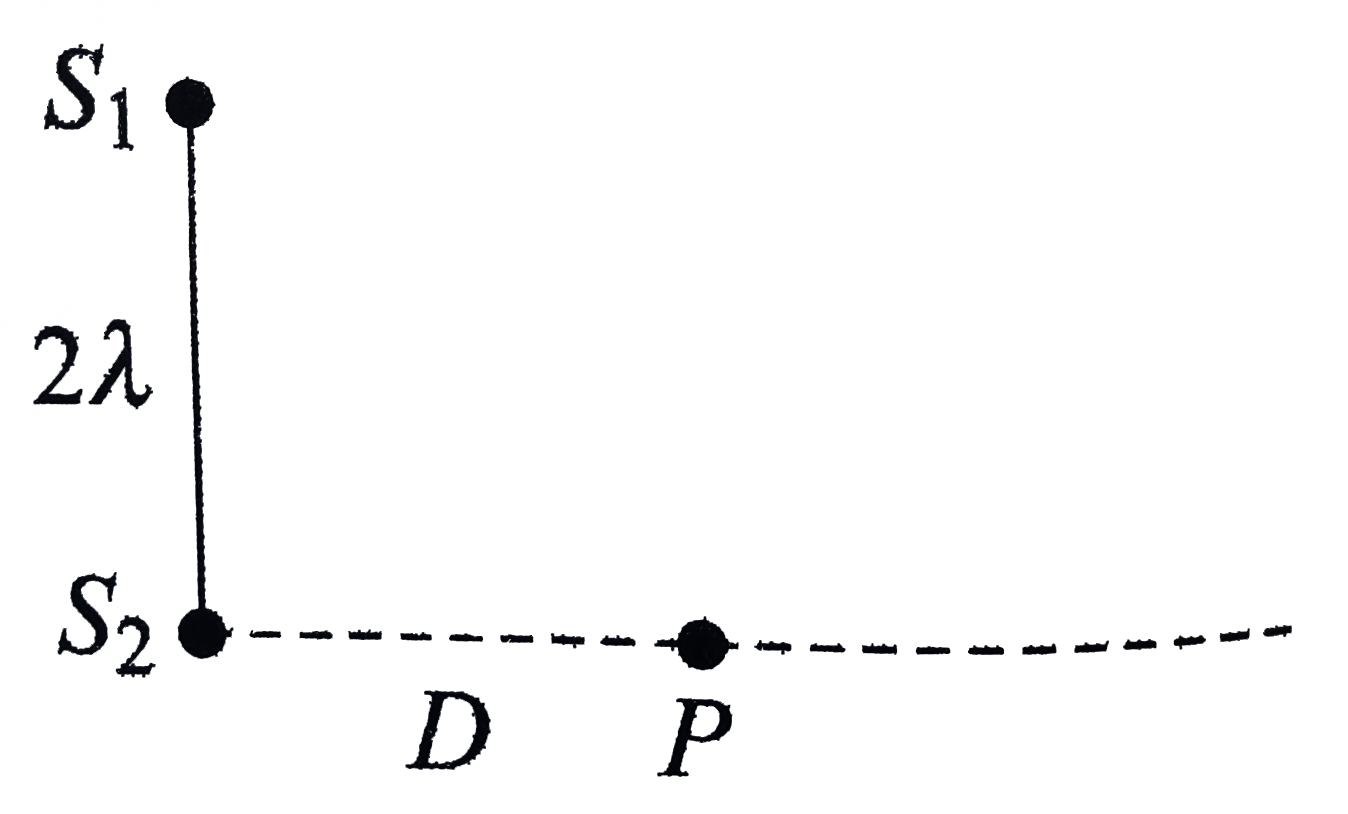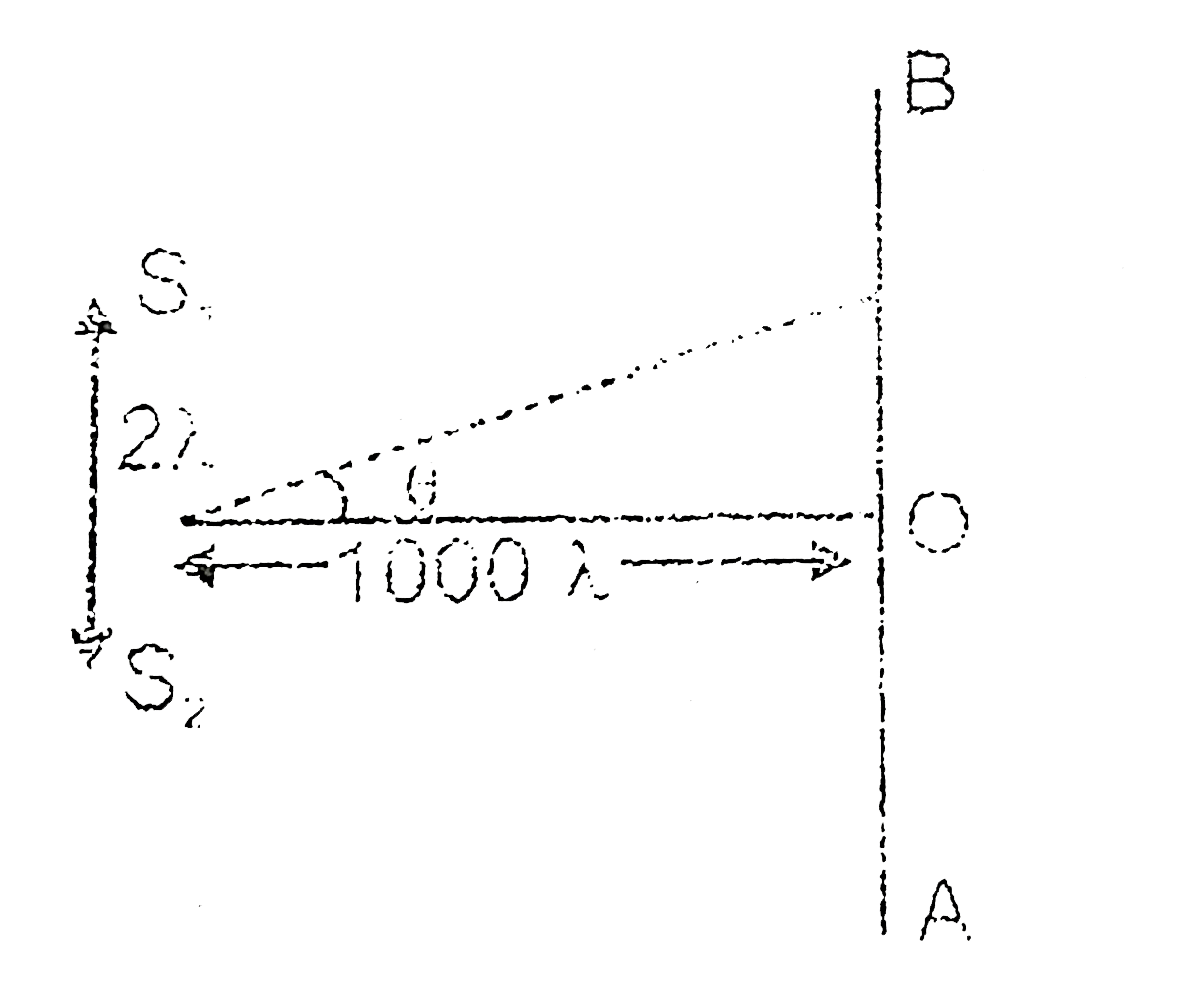Two source of sound, S1 and S2, emitting waves of equal wavelength 2cm, are placed with a separation of 3cm between them. A detector can be moved on a line parallel to S1S2 and at a distance 24cm from it. Initially, the detecor is equidistant from the two sources. Assuming that the waves emitted by the sources are in phase, find the minimum distance through which the detector should be shifted to detect a minimum of sound.
To solve the problem step by step, we need to analyze the situation involving two sound sources and the detector's position. Here’s how we can approach it:
Step 1: Understand the Setup
We have two sound sources, S1 and S2, separated by a distance of 3cm. The wavelength of the sound waves emitted by both sources is 2cm. The detector is initially positioned equidistant from both sources at a distance of 24cm away from the line connecting the sources.
Step 2: Determine the Initial Position of the Detector
Since the detector is equidistant from both sources, we can denote the distance from the line connecting the sources to the detector as d=24cm. The horizontal distance from S1 to the detector can be calculated using the right triangle formed by the sources and the detector.
Step 3: Calculate the Path Difference
The path difference Δd between the waves reaching the detector from S1 and S2 can be expressed as:
Δd=d2−d1
where d1 and d2 are the distances from the detector to S1 and S2 respectively.
Step 4: Condition for Minimum Sound
For destructive interference (minimum sound), the path difference must be equal to an odd multiple of half the wavelength:
Δd=(n+12)λ
where n is an integer. For the first minimum, we can set n=0, thus:
Δd=λ2=2cm2=1cm
Step 5: Set Up the Equation
We can express the path difference in terms of the horizontal shift x of the detector:
Δd=√(242+(1.5+x)2)−√(242+(1.5−x)2)
Setting this equal to 1cm gives us the equation to solve for x.
Step 6: Solve the Equation
Squaring both sides and simplifying will lead to a quadratic equation in x. After solving, we find that:
x=12cm
This means the detector must be shifted 12cm to detect the minimum sound.
Final Answer
The minimum distance through which the detector should be shifted to detect a minimum of sound is 12cm.
---
We have two sound sources, S1 and S2, separated by a distance of 3cm. The wavelength of the sound waves emitted by both sources is 2cm. The detector is initially positioned equidistant from both sources at a distance of 24cm away from the line connecting the sources.
Since the detector is equidistant from both sources, we can denote the distance from the line connecting the sources to the detector as d=24cm. The horizontal distance from S1 to the detector can be calculated using the right triangle formed by the sources and the detector.
The path difference Δd between the waves reaching the detector from S1 and S2 can be expressed as:
Δd=d2−d1
where d1 and d2 are the distances from the detector to S1 and S2 respectively.
For destructive interference (minimum sound), the path difference must be equal to an odd multiple of half the wavelength:
Δd=(n+12)λ
where n is an integer. For the first minimum, we can set n=0, thus:
Δd=λ2=2cm2=1cm
We can express the path difference in terms of the horizontal shift x of the detector:
Δd=√(242+(1.5+x)2)−√(242+(1.5−x)2)
Setting this equal to 1cm gives us the equation to solve for x.
Squaring both sides and simplifying will lead to a quadratic equation in x. After solving, we find that:
x=12cm
This means the detector must be shifted 12cm to detect the minimum sound.
The minimum distance through which the detector should be shifted to detect a minimum of sound is 12cm.
Topper's Solved these Questions
- SOUND WAVESBOOK - RESONANCE ENGLISHCHAPTER - SOUND WAVESEXERCISE - Exercise- 1 PART - II
30 Videos
- SOUND WAVESBOOK - RESONANCE ENGLISHCHAPTER - SOUND WAVESEXERCISE - Exercise- 2 PART - I
24 Videos
- SOUND WAVESBOOK - RESONANCE ENGLISHCHAPTER - SOUND WAVESEXERCISE - Board Level Exercise
33 Videos
- SIMPLE HARMONIC MOTIONBOOK - RESONANCE ENGLISHCHAPTER - SIMPLE HARMONIC MOTIONEXERCISE - Exercise
28 Videos
- STRING WAVESBOOK - RESONANCE ENGLISHCHAPTER - STRING WAVESEXERCISE - Exercise
32 Videos
Similar Questions
Two sources of sound, S1andS2 , emitting waves of equal wavelength 20.0 cm, are placed with a separation of 20.0 cm between them. A detector can be moved on a line parallel to S1S2 and at a distance of 20.0 cm from P it. Initially, the detector is equidistant from the two sources. Assuming that the waves emitted by the sources are in phase, find the minimum distance through wffich the detector should be shifted to detect a minimum of sound.
View SolutionTwo sources S1andS2 emitting light of wave length 600 nm are placed a distance 1.0x10−2 cm apart. A detector can be moved on the litre line S1P which is perpendicular to S1S2. a.What would be the minimum and maximum path differrence at the detector as it is moved alog the line S1P? b. Locate the position of the farthest minimum detect.
View SolutionTwo sources S1 and S2 emiting light of wavelenght 600 nm placed a distance 1.0×10−2 cm apart.
A detector can be moved on line S1P which is perpendicular to S1S2
(a) What would be the minimum and maximum path difference at the detector as it moves along line S1P ?
(b) Locate the psoition of the farthest minima detected
 .
.
View SolutionA soure of sound of frequency 165 hz is placed in front of a wall at a distance 2 m from it. A dtector is also placed in front of the wall at the same distance from it. Find the minimum distance between the source and detector for which maximum sound is recorded int he detector . the speed of sound is 330 m/s
View SolutionS1 and S2 are two sources of sound emitting sine waves. The two sources are in phase. The sound emitted by the two sources interfers at point F. The waves of wavelength :

View SolutionTwo coherent point sources S1 and S2 vibrating in phase emit light of wavelength λ. The separation between the sources is 2λ. Consider a line passing through S2 and perpendicular to line S1S2. Find the position of farthest and nearest minima.
 .
.
View SolutionTwo point sources S1 and S2 are 24 cm apart. What should a convex lens of focal length 9 cm be placed between them so that the images of both sources formed at the same place ?
View SolutionTwo coherent sources Sf and S2 (in phase with ech other) are placed at a distance of 2λ as shown where λ is wavelength of sound. A detector moves on line AB parrallel to S1S2. If detector detects maximum intensity at finite distance from O at θ=±(πn). Find n

View SolutionA soure of sound of frequency 165 hz is placed in front of a wall at a distance 2 m from it. A dtector is also placed in front of the wall at the same distance from it. Find the minimum distance between the source and detector for which maximum sound is recorded int he detector . the speed of sound is 330 m/s
View SolutionA sound sources, detector and a movable wall are arranged as shown in figure. In this arrangement detectir us detacting the maximum intensity. If the speed of sound is 330m/s in air and frequency of source is 660Hz, then find the minimum distance by which the wall should be moved away from source, so that detector dtects minimmum intensity.

View Solution
